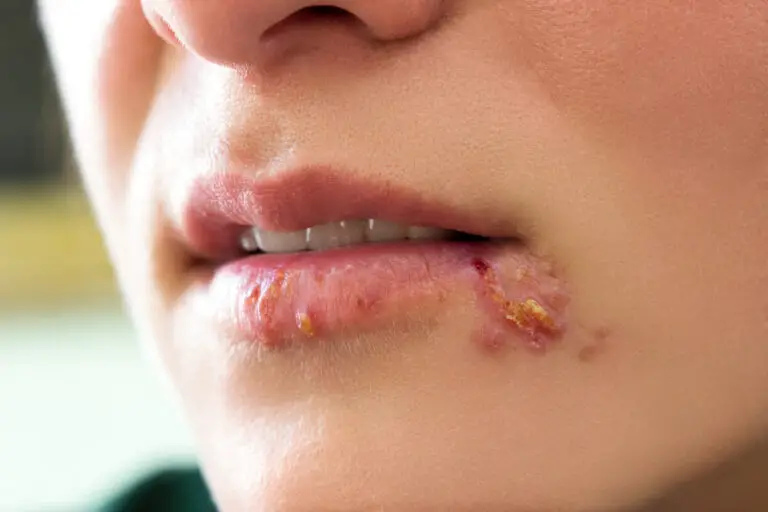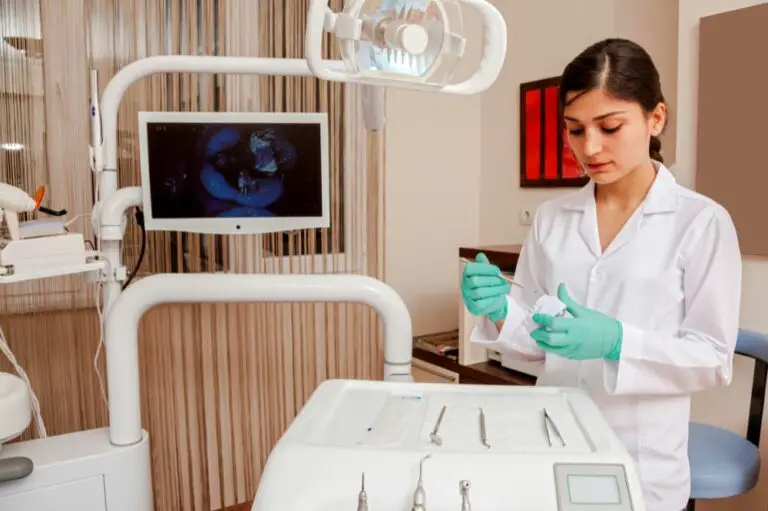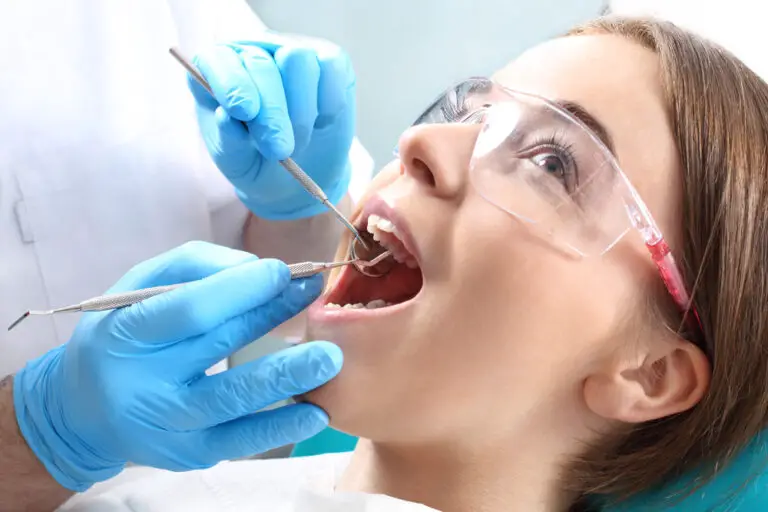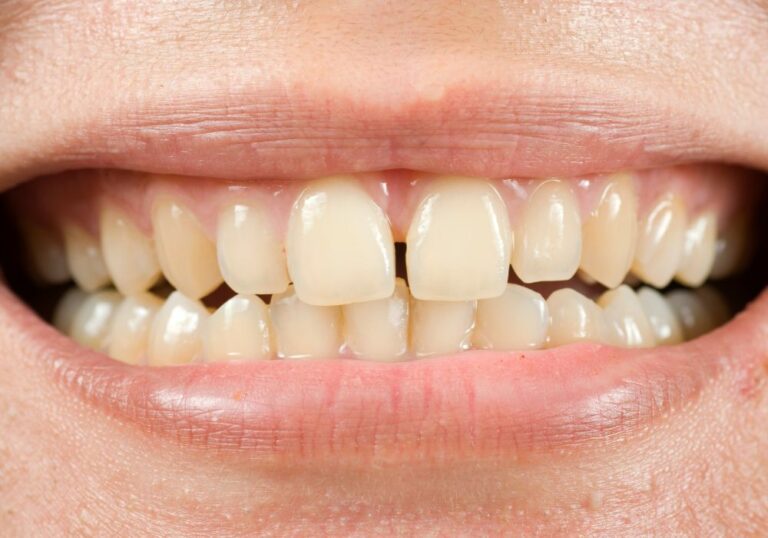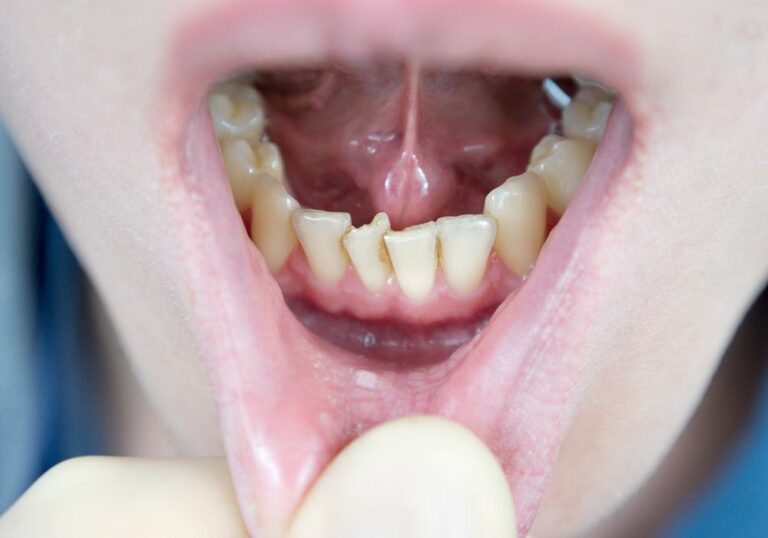Wisdom teeth, also known as third molars, are the last set of molars to erupt in the back of the mouth typically between the ages of 17 and 25. They are located in the very back of the jaw and often do not have enough room to properly emerge, causing them to become impacted or stuck. This can lead to pain, infection, and other dental problems. But if they tend to cause problems, why do we have wisdom teeth at all?
Why are we born with wisdom teeth if we don’t need them?
The evolutionary history of wisdom teeth
Wisdom teeth are vestigial structures, meaning they have lost most or all of their ancestral function during the course of evolution. They are remnants of our distant past when early humans had larger jaws and ate a coarse, abrasive diet consisting of stems, leaves, roots, nuts, and meat. The extra molars were useful for chewing and grinding all that tough fiber.
Over time, human diets became softer and more processed with the advent of cooking and agriculture. Jaws have become progressively smaller while teeth have become smaller and more compact. This evolutionary trend is called “tooth size reduction.”
Modern humans have smaller jaws but still retain the genes that direct wisdom tooth growth. But with insufficient space, the wisdom teeth often end up being dysfunctional and requiring extraction.
When did wisdom teeth stop being useful?
Anthropologists believe wisdom teeth started becoming obsolete as our ancestors adopted more advanced food processing techniques such as cooking, fermentation, and grinding. The approximate timeline is:
- 200,000-50,000 years ago: Early Homo sapiens had large jaws and teeth to process tough, raw foods. Wisdom teeth were fully functional.
- 50,000-10,000 years ago: Cooking became widespread. Jaws and teeth shrank. Wisdom teeth became non-essential.
- 10,000 years ago-present: Modern agriculture and industry further softened diets. Wisdom teeth became vestigial and began being surgically extracted.
So while wisdom teeth served an important purpose for the first 90% of human evolution, they are now an evolutionary leftover from our pre-agricultural days.
Wisdom teeth are not necessary for survival and reproduction
Wisdom teeth meet the criteria for being vestigial:
- They are remnants of organs that served a purpose in ancestral species
- They are no longer useful, becoming underdeveloped or nonfunctional
- Modern humans can survive and reproduce normally without them
While complications from impacted wisdom teeth can cause pain and health issues, having them removed surgically does not affect overall fitness and survivability. This confirms that wisdom teeth have lost their original function over the course of human evolution.
Wisdom teeth extractions are very common
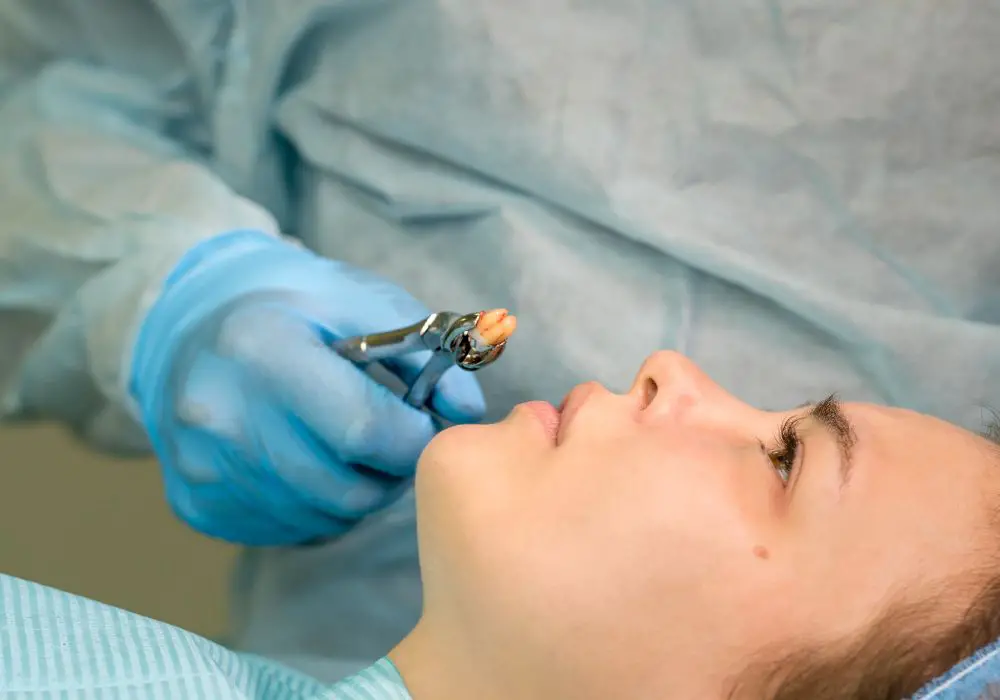
According to a 2007 report by the American Dental Association, wisdom teeth removal accounts for around 10 million procedures per year in the United States alone. Studies show:
- About 65% of the population has at least one impacted wisdom tooth
- Around 25% of people have extractions due to symptomatic impaction
- Close to 60% of young adults have at least one wisdom tooth removed prophylactically
This data reveals that problematic wisdom teeth are extremely prevalent and their surgical removal is exceedingly routine. It is essentially considered a normal rite of passage in modern society.
Trends in wisdom teeth extraction
The percentage of people with wisdom teeth extractions has steadily risen over time:
| Year | Percentage of People with 1+ Wisdom Teeth Removed |
|---|---|
| 1938 | 7% |
| 1949 | 16% |
| 1960 | 40% |
| 1976 | 63% |
| 2000s | Over 75% |
This rapid increase correlates with reduced jaw sizes in modern populations as well as advancements in oral surgery allowing for safer, low-risk extractions. Extracting asymptomatic wisdom teeth as a precaution has also become standard protocol.
Wisdom teeth are rare in some populations
There are a few ethnic groups where wisdom teeth are much less prevalent or even absent altogether:
- Indigenous Australians: Less than 3% have 1 or more wisdom teeth
- Inuit people of Alaska: Around 5-10% prevalence
- Remote tribal populations: Virtually 0% prevalence of wisdom teeth
This lends further credence to the dietary and environmental factors influencing jaw size and wisdom tooth retention over generations. Groups eating tougher, indigenous diets maintain bigger jaws with sufficient space for wisdom teeth.
Benefits of modern diets outweigh wisdom teeth
The softer foods that have rendered wisdom teeth obsolete also confer many critical survival and health benefits:
- Efficient nourishment from cultivated crops and selectively bred livestock
- More calories and nutrients like carbohydrates, fats, and proteins
- Reduced episodic famine and malnutrition
- Higher population densities and modern civilization
While we have traded wisdom teeth for these agricultural and societal advancements, most would agree it has significantly enhanced our species’ wellbeing and longevity.
Are wisdom teeth evolving out of existence?

With wisdom teeth becoming increasingly troublesome and unnecessary in modern humans, scientists wonder if we are witnessing them disappearing altogether. Some possible futures regarding wisdom teeth evolution are:
Continued high rates of extraction
Wisdom teeth complications are so widespread, their surgical removal prior to reproduction has almost become an expected rite of passage. Unless extraction rates decline substantially for multiple generations, evolutionary pressure to select them out may remain minimal.
Eventual non-emergence of wisdom teeth
Some researchers contend that high extraction rates are gradually contributing to selective breeding against wisdom teeth. Those with fully erupted wisdom teeth end up more likely to have them removed before having offspring. If this trend continues over thousands of years, the genes influencing wisdom tooth formation could slowly fade from human populations.
Rapid disappearance through genetic engineering
Advances in genetics and reproductive technology could accelerate the decline of wisdom teeth. Selective embryo screening against wisdom tooth genes or direct editing of DNA could swiftly make these vestigial teeth disappear within just a few generations.
Re-emergence through dietary and lifestyle changes
If modern foods again become too hard or fibrous to process without wisdom teeth, these vestigial organs could once again become beneficial. Jaw sizes might increase, and the genetic variations keeping wisdom teeth dormant could be deselected. Their return seems unlikely, however, given the consistent trend toward further dietary softening and dental downsizing.
In summary, while wisdom teeth may eventually vanish through persistent extractions or direct genetic manipulation, modern conditions still induce their problematic formation often enough that calling them “obsolete” seems premature. For now, these troublesome teeth remain a persistent part of the human experience.
Wisdom teeth symbolize tradeoffs in evolution
The existence of wisdom teeth serves as an intriguing example of how evolution involves complex tradeoffs, not progress toward an ideal.
Humans gave up large, powerful jaws (and properly functioning wisdom teeth) in exchange for things like speech capability, cultural transmission of knowledge, and tool use that enabled our species to access to high-calorie, processed foods.
There was no perfect solution. Hence, the increased reproductive fitness from having smaller teeth came at the cost of discomfort when those teeth sometimes emerge as impacted wisdom teeth prone to infection.
Like most adaptations, the path of human evolution represents a delicate balance of costs and benefits, not intelligent design toward some ultimate lifeform. Vestigial structures like wisdom teeth remind us we are works in progress shaped by dynamic environmental pressures, not any predetermined destination.
The risks and benefits of wisdom tooth extraction
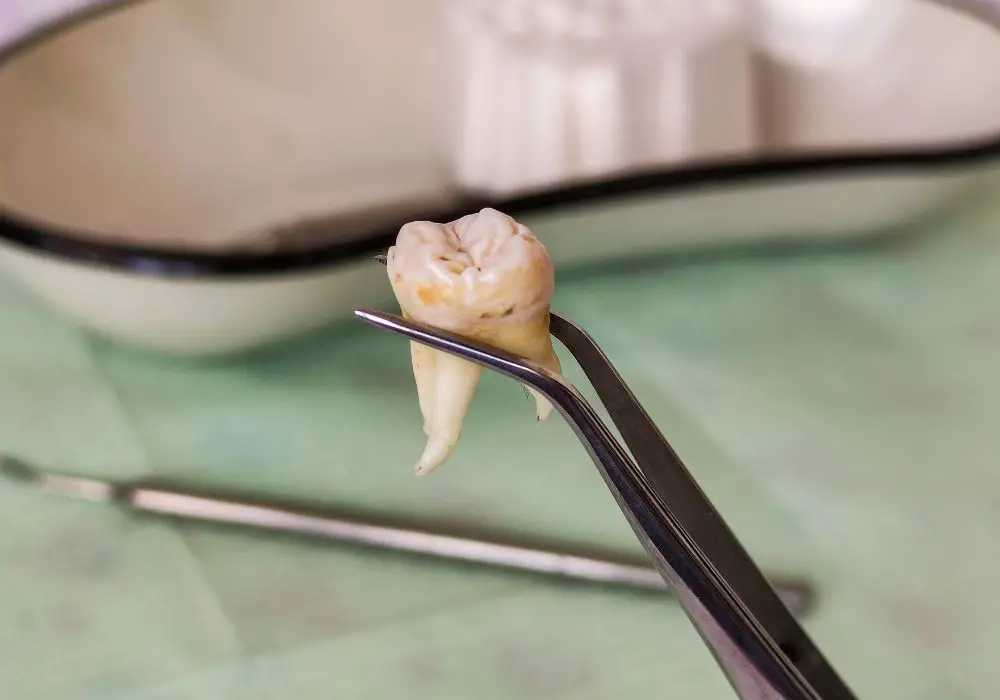
For most people, it is recommended to have any problematic wisdom teeth removed. However, extraction does carry some risks. Understanding both the potential complications of keeping wisdom teeth compared to risks from surgery can help make an informed decision.
Potential problems of retaining wisdom teeth
- Impaction: Partially emerged teeth allow bacteria buildup leading to infection.
- Pericoronitis: Infection and inflammation of gums surrounding wisdom teeth.
- Cysts: Fluid-filled sacs form from impacted follicle.
- Tooth decay: Difficulty cleaning allows cavities in wisdom teeth.
- Overcrowding: Wisdom teeth push other teeth forward leading to misalignment.
- Jaw fracture: Weakened jaw bones are prone to fracture.
- TMJ/TMD: Jaw and bite misalignment causes chronic pain.
Typically, the longer impacted wisdom teeth are left in, the higher the risks of complications.
Risks and complications of wisdom tooth extraction
- Nerve damage: Lingering numbness from damaged inferior alveolar nerve.
- Dry socket: Painful condition when blood clot dislodges.
- Jaw fracture: Risk from excessive bone removal. More likely in older patients.
- Damage to other teeth: Adjacent teeth may be injured during extraction.
- Sinus communication: Upper wisdom teeth removal can puncture sinus cavity.
However, most extractions are relatively quick, routine procedures with smooth recovery. When performed by an experienced oral surgeon, serious risks are rare.
Benefits of wisdom tooth extraction
- Alleviate pain or infection from impacted teeth
- Prevent future problems like cysts, decay, or root resorption
- Resolve overcrowding issues if teeth are pushing others out of place
- Allow placement of braces for improved alignment or bite
- Enable thorough cleaning for better oral hygiene
- Reduce jaw fracture risk from weakened bone
For many, the benefits clearly justify extraction of troublesome wisdom teeth. Patients often report feeling much better after removal.
Case-by-case considerations
- Extraction is nearly always recommended for symptomatic wisdom teeth.
- Prophylactic removal of asymptomatic teeth is sometimes suggested depending on positioning.
- Leaving wisdom teeth in place is an option if no apparent problems and regular monitoring.
- General health, medications, oral health history help determine best course of action.
- Make the decision in careful consultation with your dentist or oral surgeon.
There are no definitive guidelines on handling wisdom teeth. Each case should be evaluated individually to weigh the risks versus benefits of extraction.
Recovering from wisdom tooth removal surgery

Wisdom tooth extraction is one of the most commonly performed procedures by oral surgeons. Recovery typically takes 7-10 days with proper aftercare. Here is an overview of the wisdom tooth removal healing timeline and tips for ensuring optimal recovery:
Wisdom tooth removal surgery
- Remove using local anesthesia, sometimes combined with sedation.
- Make incisions into gum tissue to expose tooth.
- Detach tooth from bone using drill or chisel. May require some bone removal.
- Split tooth into pieces for easier extraction if impacted.
- Place stitches to close surgical site.
Duration is typically 20-40 minutes per tooth depending on complexity.
Recovery timeline
Day of surgery
- Bleeding should subside before leaving office.
- Numbness of lips, tongue, or cheeks from anesthesia.
- Some swelling around cheeks or jaw.
- Pain, managed with prescription medicine.
- Eat soft foods like yogurt, applesauce, soup.
- Keep head elevated, limit activity.
Days 2-3
- Swelling peaks on day 2, remains moderate for a few days.
- Pain often worst on days 2-3 but still manageable with medication.
- Some bruising around cheeks, neck possible.
- Low-grade fever up to 100 F normal.
- Continue soft foods and lots of fluids.
Days 4-7
- Pain, swelling, and bruising begin to subside.
- Try adding in soft normal foods or meal replacement shakes.
- Resume light activity after 48 hours.
- Finish antibiotics and medications as directed.
Days 8-14
- Gradual return to normal diet as comfortable.
- Swelling typically gone.
- Stitches dissolve on own or are removed by dentist.
- Normal activity OK.
- Healing largely complete by end of 2 weeks.
Full bone remodeling and healing of extraction sites takes 3-6 months.
Recovery tips
- Rest with head elevated for 48 hours. Avoid strenuous physical activity or exercise.
- Ice packs on cheeks for 10-20 minutes several times per day reduces swelling.
- Pain medication as needed according to directions. Most severe pain during days 2-3.
- Salt water rinses starting 24 hours after surgery keeps sockets clean.
- Soft diet for at least 5-7 days. Liquids, smoothies, eggs, pasta. Avoid very hot foods.
- Avoid straws or smoking to prevent dry socket which exposes nerves and causes severe pain.
Call your oral surgeon with any concerns, fever over 101 F, excessive bleeding, or severe pain not responsive to medication. Proper aftercare ensures the best results.
FAQs About Wisdom Teeth
Are wisdom teeth genetic?
There appears to be some genetic influence on wisdom tooth formation, but dietary and environmental factors still play a major role. Studies on twins show wisdom tooth impaction is not completely predetermined by genetics.
What age do wisdom teeth usually come in?
Wisdom teeth typically emerge between ages 17-25, but can range anywhere from the teenage years to the 30s or even 40s in rarer cases. Ethnic background, nutrition, and genetics affect timing.
Do wisdom teeth move other teeth?
Partially impacted wisdom teeth can put pressure on rear molars and push them forward leading to misalignment of the bite over time. Proper braces treatment often requires any problematic wisdom teeth to be removed first.
Why do wisdom teeth need to be cut out?
Impacted or partially emerged wisdom teeth have roots firmly encased in the jawbone. The surgeon cuts the tooth into smaller pieces for easier removal to avoid excessive bone removal or tooth fracture. This also minimizes trauma to surrounding tissues.
How long are you numb after wisdom teeth removal?
The local anesthetic numbness in your lips, tongue, and mouth after surgery typically lasts between 2-5 hours. In some cases it can potentially persist for days or weeks if the inferior alveolar nerve was irritated.

